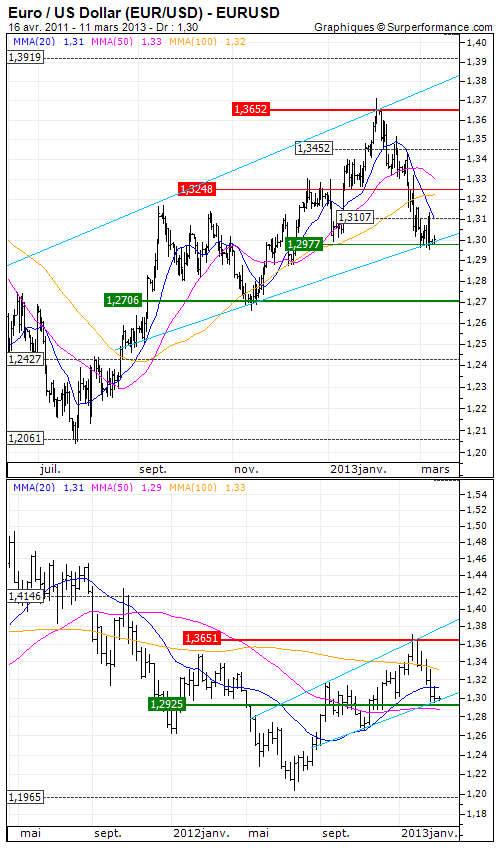Euro / US Dollar (EUR/USD) : No more downside risks
By Mathieu Burbau
Indeed, the single currency is resistant in spite of bad figures in the Eurozone: new unemployment record (11.9%), confirmation of a contraction by 0.6% of GDP in Q4 according to a second estimate, strongest quarterly decline in exports since nearly 4 years, declining inflation by almost one percentage point year on year (1.9%). The European currency is supported by its central bank thanks to the OMT, this famous program of asset purchases.
In its monthly press conference, Mario Draghi has welcomed that contagion risks were quickly reduced following Italian legislative, as evidenced by appeasement on bond markets. Despite a slight decrease in ECB growth forecasts for 2013 and 2014, the head of the institution has given no indication about any future quantitative easing.
On the other side of the Atlantic, the Dow Jones is now around its historical highs while the U.S. GDP does not take off (+0.1% in Q4 according to a second estimate) and the country is now facing the fiscal cliff. According to the IMF, the lack of agreement in Congress leading to automatic spending cuts of 85 billion dollars could cost 0.5% in growth to the world’s largest economy.
Graphically, the downward acceleration below the 1.3053 did not happen thanks to Mario Draghi’s comforting words and we now expect a trading range period with 1.2977 as lower bound. We are temporarily away from this exchange rate, waiting for a new bullish trend of the single currency.





